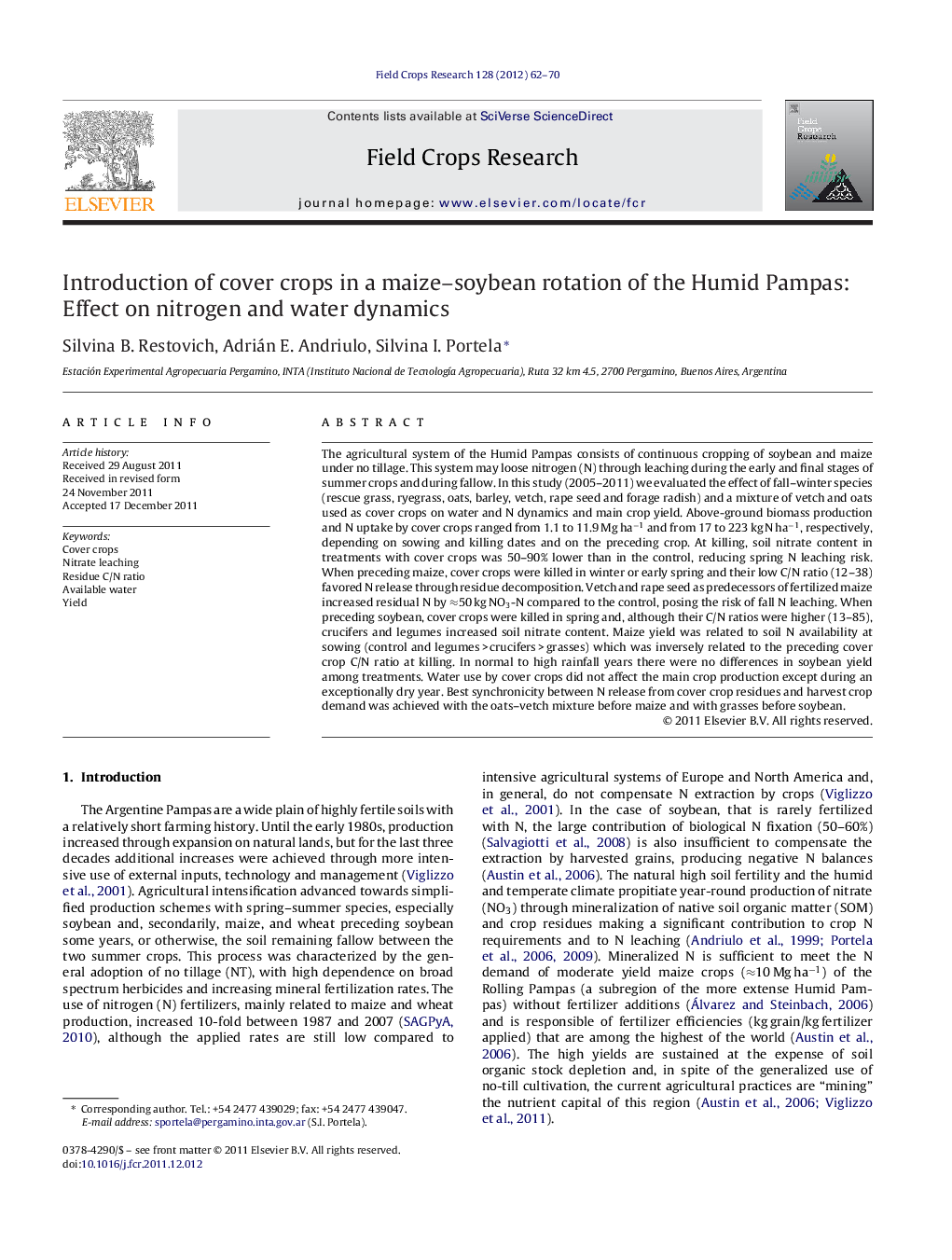| کد مقاله | کد نشریه | سال انتشار | مقاله انگلیسی | نسخه تمام متن |
|---|---|---|---|---|
| 4510655 | 1624735 | 2012 | 9 صفحه PDF | دانلود رایگان |

The agricultural system of the Humid Pampas consists of continuous cropping of soybean and maize under no tillage. This system may loose nitrogen (N) through leaching during the early and final stages of summer crops and during fallow. In this study (2005–2011) we evaluated the effect of fall–winter species (rescue grass, ryegrass, oats, barley, vetch, rape seed and forage radish) and a mixture of vetch and oats used as cover crops on water and N dynamics and main crop yield. Above-ground biomass production and N uptake by cover crops ranged from 1.1 to 11.9 Mg ha−1 and from 17 to 223 kg N ha−1, respectively, depending on sowing and killing dates and on the preceding crop. At killing, soil nitrate content in treatments with cover crops was 50–90% lower than in the control, reducing spring N leaching risk. When preceding maize, cover crops were killed in winter or early spring and their low C/N ratio (12–38) favored N release through residue decomposition. Vetch and rape seed as predecessors of fertilized maize increased residual N by ≈50 kg NO3-N compared to the control, posing the risk of fall N leaching. When preceding soybean, cover crops were killed in spring and, although their C/N ratios were higher (13–85), crucifers and legumes increased soil nitrate content. Maize yield was related to soil N availability at sowing (control and legumes > crucifers > grasses) which was inversely related to the preceding cover crop C/N ratio at killing. In normal to high rainfall years there were no differences in soybean yield among treatments. Water use by cover crops did not affect the main crop production except during an exceptionally dry year. Best synchronicity between N release from cover crop residues and harvest crop demand was achieved with the oats–vetch mixture before maize and with grasses before soybean.
► Introducing fall–winter cover crops in a maize–soybean rotation reduced soil leachable N.
► Cover crop's water use did not affect main crop yield.
► Maize and soybean yields were similar or higher than those obtained without cover crops.
► Maize yield was related to cover crop C/N ratio at killing.
Journal: Field Crops Research - Volume 128, 14 March 2012, Pages 62–70